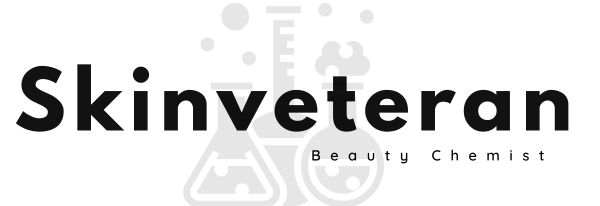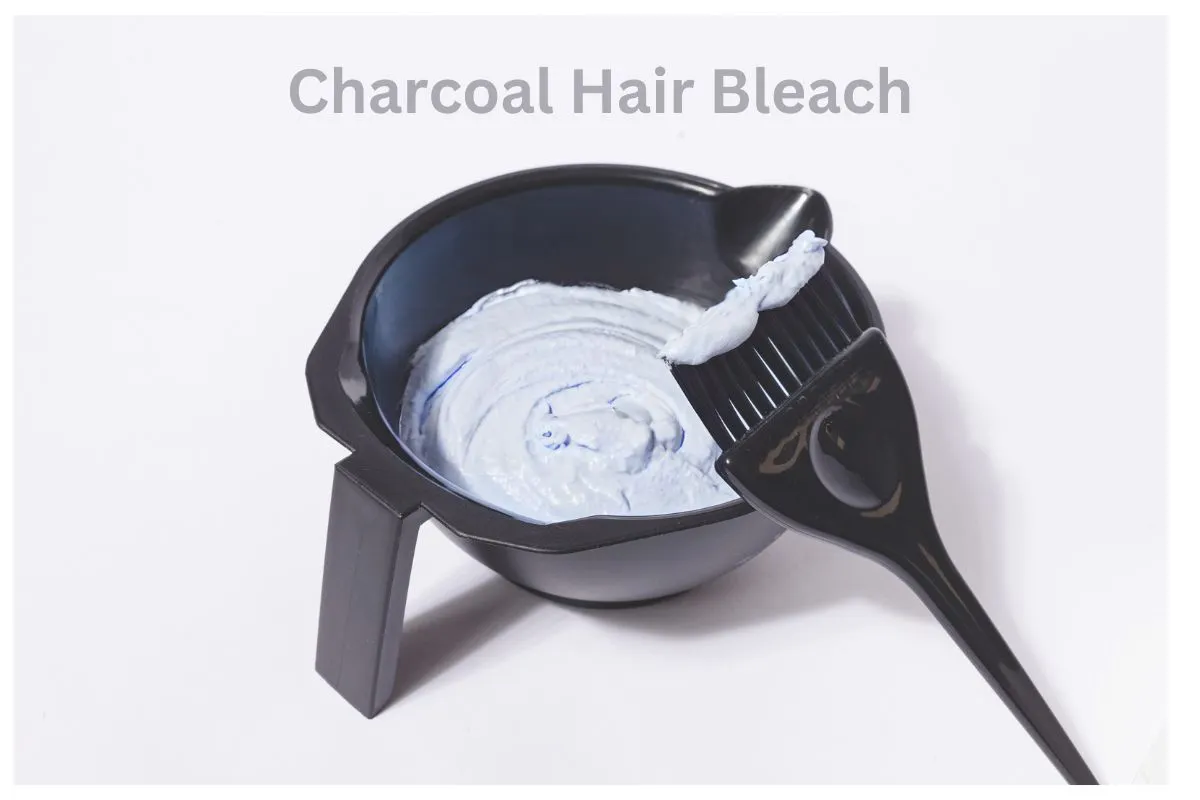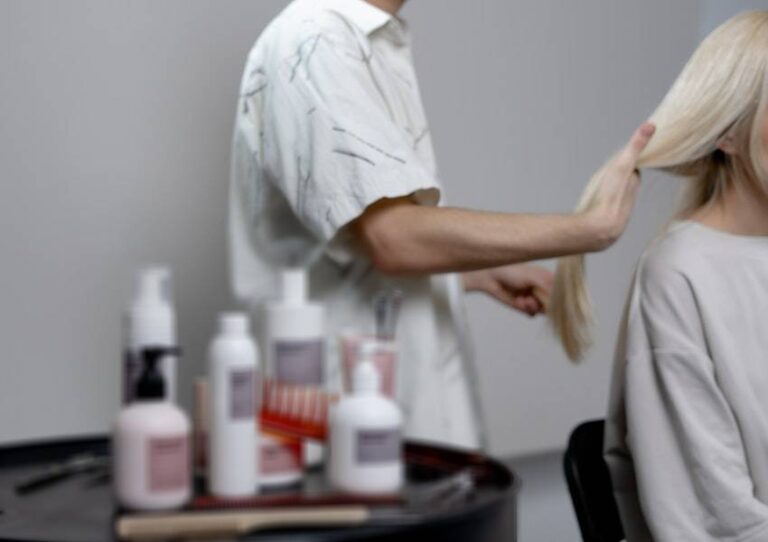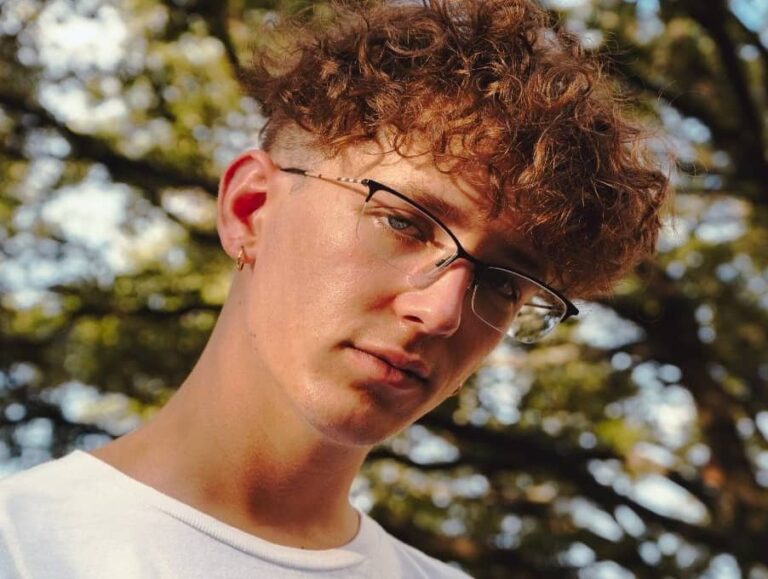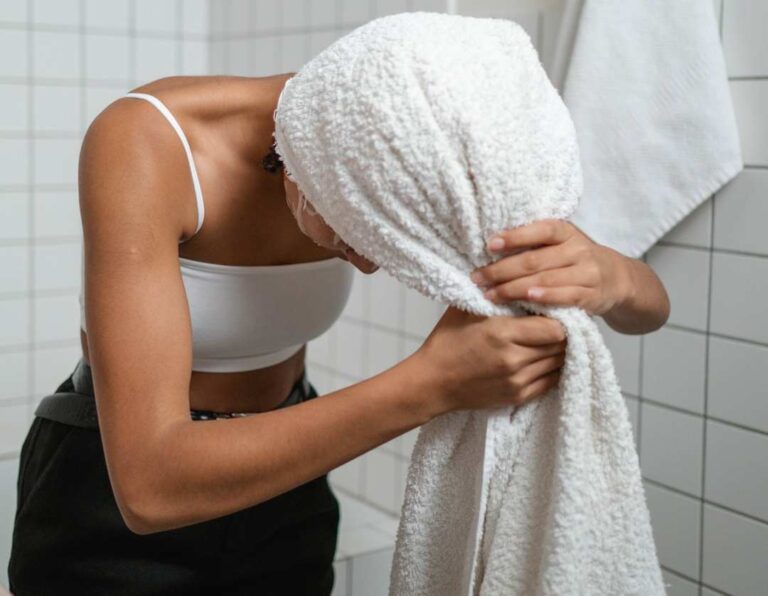Charcoal Hair Bleach: Gentle Alternative Or Marketing Hype?
I work in a cosmetic company’s product development department, which makes every new trendy hairstyling product on social media an exciting prospect for me. With charcoal hair bleach, I wanted to understand what was giving it lifting power beyond just marketing hype.
Charcoal powder has minimal color lifting ability – we’re talking only 2 to 3 shades tops. Yet the brands claim their charcoal-based bleach lightens hair up to 10 levels.
As an insider, I know there’s no replacement for chemical processing when you want a dramatic hair color lift. Upon going down the rabbit hole of research, I found that charcoal lighteners contain many identical harsh ingredients to standard powder bleaches.
Persulfates, though in slightly less concentration, can be found in the ingredient list of any charcoal-based bleach that claims to lighten hair up to 5 or more levels.
So, what makes charcoal hair bleach a better or somewhat safer alternative to usual bleach powders and creams?
A Brief Breakdown of the Basics of Regular vs Charcoal Hair Bleach
Before diving into the details of charcoal hair bleach, it’s helpful to level-set on what’s actually in regular hair-lightening powders.
Bleach lightens hair by oxidizing and stripping melanin pigments to reveal lighter tones. But which ingredient is mainly responsible for it?
Standard bleach powders typically contain two reactive agents: alkalizers and persulfate salts. Commonly used alkalizers include ammonia, ethanolamine, or sodium/potassium silicates.
Alkalizers swell and open the hair cuticles so persulfates and hydrogen peroxide (developer) can penetrate.
Persulfates like sodium, potassium, or ammonium persulfate, in combination with hydrogen peroxide, break down melanin within the hair shaft and allow color molecules to escape.
Hair damage from bleaching comes from the actions of these persulfates and hydrogen peroxide. They strip protein from the hair shaft, making it brittle and weak.
So, what’s in Charcoal-based hair-lightening powders?
Now, charcoal bleach powders claiming to lift hair color up to 9 levels contain all the components of regular bleach powder. This means they rely on the same chemical lifting and oxidation reactions.
So, how are they different? What makes them less damaging?
First, adding charcoal decreases the persulfate concentration by almost 15-25%. It could help reduce the damage from bleaching action.
A few less damaging hair bleach brands use arginine or less concentration of persulfates.
But charcoal hair bleach has more upsides, which makes it even safer.
What Makes Charcoal Hair Bleach a Better Alternative to Regular Bleach?
The difference between the two bleach powders is primarily due to the presence of charcoal as a key ingredient in one of them.
Now, what does this charcoal do?
Activated charcoal has a unique charge that draws it to lighter hair molecules, like yellows or oranges. As you bleach with a charcoal formula, that black pigment binds to and cancels out some underlying warm tones.
You’re left with cooler, ashier hair right after rinsing with less unwanted brassiness or orangey shades.
Basically, the charcoal acts as a sponge absorbing warmer tones that would require a toner to combat otherwise. This gives you a brighter, more vibrant lift in fewer steps!
No Extra Step of Toner!
If you have been bleaching your hair for quite some time, you will know the mess of those orangy and yellow tones.
They are almost unavoidable if you go from a darker color to a lighter, cooler shade.
The stylist usually tones your hair to get rid of these warm tones, which is an extra step that is going to cost you money and a fair bit of damage.
Opting for charcoal hair bleach will cut that extra step off because charcoal absorbs those warm tones.
Charcoal With Very Minimum Color Lifting Power
As I explained earlier, charcoal can’t lift hair color above 1-2 levels because it does not have oxidizing power like persulfates.
Combined with hydrogen peroxide, you will get a 2-3 level of hair lightening.
So, if you want to buy a charcoal-based bleach powder, thinking it won’t contain all those harsh ingredients, you must reconsider your choice.
The charcoal itself doesn’t impact the lifting power much, though. For that, boosters like persulfates or high pH adjusters are still needed.
And those aren’t gentle either. But used carefully, charcoal can mean less hassle for a sweet, ashy color!
Is there any Pure Charcoal-based Hair bleach Available?
Pure charcoal-based bleach powders are available, though they are less common than formulas with chemical boosters like persulfates. Without other lifting agents added, charcoal alone achieves minimal brightening – only about 2-3 levels when used with the 10 or 20-volume developer.
The charcoal hair bleach that does not contain ammonia and persulfates has two main functions.
1. Neutralizing Warm Tones
Whether your brassy tones are from at-home hair bleach or fading dye, you’ll want to neutralize them.
While you can use a purple or blue toning shampoo or anti-brass hair mask, charcoal hair bleach will be a great option as it gets you ashy and lighter hair tones.
2. Removing/Lightening Hair Dye
Pure charcoal powder can strip out semi-permanent artificial hair coloring over time through gentle absorption. It lightly detoxifies coated hair as well.
An example is Provoke Touch of Silver charcoal powder – the intention is toning and dye removal rather than dramatic lift.
Wrapping Up
While charcoal hair bleach promises cooler lift and less brassiness compared to traditional lighteners, you should know that it relies on the same harsh chemicals like ammonia and persulfates underneath.
Charcoal mainly acts as a toning agent on top of standard bleaching ingredients. For hugely lighter hair minus damage, there are still no shortcuts.
Charcoal hair bleach can save you from extra toning step after the bleach and can cause 20-30% less damage than regular bleach powder.
Get your hair done by a professional hairstylist. They will use a bonding solution like Olaplex with the bleach to reduce the damage further.
